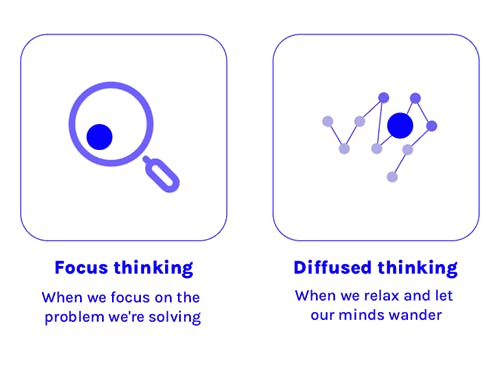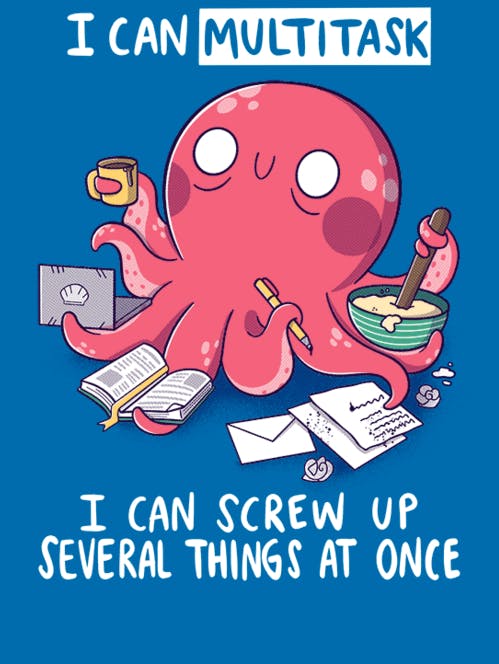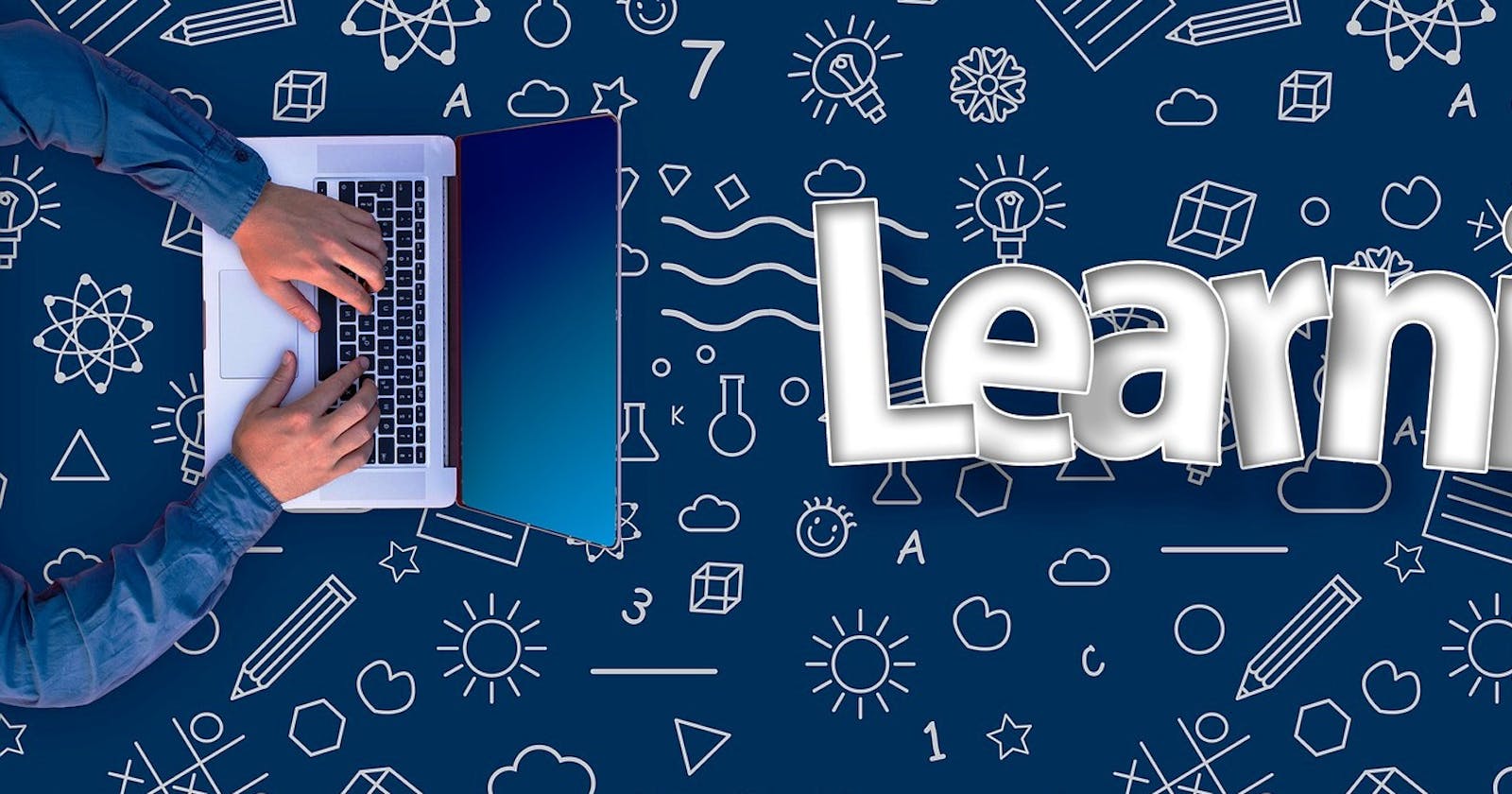How to Study Technical topics like Coding the Right Way Insanely Fast (Best Learning Hack)
Study Hacks to Learn Technical Things Faster and Make it Stick
Table of contents
Are you the type of person who hates learning new things…?
Do you find it difficult to grasp the syntax in the various languages?
Do you find yourself quitting a SQL course halfway, or procrastinating on reading that python book lying in your shelf?
Won’t it be cool to be able to learn technical things faster?
Imagine how much knowledge you’ll be able to grasp in a short amount of time by knowing how to learn faster…
Well then, this article will show you how to learn technical things faster.
So let's get the ball rolling with the study hacks you need to start implementing today to see a stride in your learning capabilities.
Active Recall
If you go to the library and start talking to other people, you’ll be kicked out. But…
If you're talking to yourself, then you’ll be isolated and no one will want to approach you.
The active recall has been scientifically proven by many psychology experts. It’s one of the most powerful learning techniques that superaids learning.
Active recall actually forces you to test yourself by capturing the information you’re learning and reframing it in your own words.
This action helps to strengthen the neuron connection in the brain.
Doing so will also result in better understanding, and long term retention of the information you’re learning.
Test Yourself
There are actually lots of different ways to do active recall.
One of them is by testing yourself. You can do so by writing down questions on flash cards and answering them.
They’re very effective for memorizing things quickly, which is great for preparing for an interview.
Write down the questions with a clue to the answer on one side of the flash cards and the answers on the other side of the flash card.
Shuffle them, pick one randomly, look at the question and the clue and answer it before turning it over.
Talking to Yourself
Talking to yourself is even better than testing yourself. As, it will help you to summarize what you just learnt in your own words.
It’s also a lot faster than the first method of writing down questions and testing yourself.
Worried that you might sound weird, or concerned about people flat out labeling you as a crazy mofo? Then explain the concepts out loud to your cat, or your mom.
Don't have your mom or your cat around, then make up an imaginary friend? And imagine that new friend being a sixth grader.
Explain it to him as though he knows nothing about the subject.
Doing so will force you to explain the concepts of the subjects to yourself in simpler terms even if the subject is complex.
In conclusion, Active recall is one of the best techniques for learning new concepts.
Environmental Design
Come close, let me whisper something to your ears. come closer..
….Do you have no self-control over yourself?
Are you the guy who can’t resist the urge to grab the cookie or chocolate sitting next to you?
Or the guy who keeps checking on his emails or social media notifications every 5 minutes?
Then pay close attention right now, because environmental design is here to bail you out. :)
Environmental design involves designing your environment to make you instill good habits into your brain. It forces yourself to do certain things and avoid doing certain things.
It’s like putting a gun to your head to make you do the right thing. Yes, it’s that powerful. This concept was explained in detail in James Clare's atomic habits book.
His idea in the book was that instead of relying on motivation or willpower, you should design your environment so it’ll push and make it easier for you to do the stuff you need to do.
I don’t know about your opinion on this concept but I think it’s really cool. It builds on the notion that we humans are naturally inherently lazy. So if something is easy for us to do then we’ll do it, but if it’s hard for us to do then we’ll likely not do it.
This is the very reason why you’ll choose to watch another episode of star wars on netflix instead of reading the python book buried in between the folders in your PC.
Why?
Watching Star Wars requires less focus and concentration than reading the python book - It’s more entertaining, thrilling, enticing and relaxing to watch than read.
So yea, why bother even reading the book when you just want to have fun.
It’s the same reason, you’ll choose to DM a former high school friend on facebook, than build that app, whose deadline is approaching.
Why?
Dm’eming is more fun, and engaging.
So you’re more likely to do it than open your IDE and code out that app, with a ticking deadline.
In the book, atomic habits, James goes in-depth on this concept.He gave examples of research that proved how environmental design can be used to change people's behavior.
One of them was a research study done on Google employees on the Google workspace.
The researchers simply switch out soft drinks for water in all the prominent positions in the company. They didn’t advocate the benefits of drinking water over soft drinks.
All they did was to switch water for soft drinks, and there was a substantial increase in people picking water over the unhealthy drink.
The study has been replicated in many different settings. And all the researchers did was to design the environment so that the healthy meal choices are more prominent, and by doing so people naturally picked the healthy meal choices over the unhealthy ones.
Study with me Live Streams.
One way to apply this environmental design concept is to create a study with me livestreams.
The live streams force you to design your environment so that you’re forced to do live streams with people who are interested in studying with you.
It’s also a way to push yourself to study even if you don’t feel like it. Overtime, as you build a strong fan base of young and upcoming software developers wanting to study with you, you wouldn’t want to disappoint them by not showing up for the live streams and as a result you’ll be willing to study.
To create a study with me session; you can use either your phone or laptop camera.
If you have a standalone camera then that’s even better.
You also have video editing software for streaming.
The video software will help to add white noise or background music to the video, which will encourage you and your viewers to concentrate and focus.
Time Lock Box
Another way to use environmental design to get you to learn faster is with a time lock box.
Just like it sounds, it’s literally a box that you can set not to open for an ‘x’ amount of hours. In order to focus better, you can put distracting things like your phone into the lock box and set it not to open until after 4 hours or so.
And since you won't have your phone besides you anymore to be checking your social media notifications or your email inboxes, you’re more likely to sit your ass down and study.
If you’ve ever tried intermittent fasting for a few times, then you know how difficult it’s to do. You can get it going for some time, even for a month or so, and then you won’t know when you’ll just fall off and go off track.
With the time lock, intermittent fasting becomes a lot easier to do, because you can purposely lock away junk food into the lock box until the exact hour you're meant to break the fast.
Or better still you can order for a set of fridge locks, which are literally locks that you put on your fridge to prevent your pets or kids from getting into the fridge.
But. you can buy it for yourself.
Simply lock your fridge using the fridge locks and then put the keys into the lock box.
Lock the lock box and set it not to open until your intermittent fasting is over.
It’s incredibly helpful and will help to resist any food temptation you'll encounter while fasting.
Also you won’t have to rely on willpower or motivation anymore since you literally have no food to eat, at least during the time you’ll be fasting.
Going to a Nearby Library
Still can’t bring yourself to study, after applying all the above tips?
Then you can absolutely leave your house and go to a nearby library where only books and other people studying reside.
By staying in such an environment you'll be forced to study and concentrate and not get distracted.
Rotating between the Diffused and the Focused Mindsets
Have you ever seen yourself start staring at your screen or banging your head against the wall, because you keep crashing into a bug, and don't know how to get your way around the bug.
In such situation, you need to put your computer aside and go for a walk around the block.
When you come back and stare at your screen, you will somehow miraculously figure out a way around the bug. I’m not kidding :)
It’s a concept called alternating between the diffused and focused mindset. It’s a scientific phenomenon that has been proven over and over again in recent studies.
The idea of the alternating diffused and focused mindset was popularized by Barbara Oakley, in her course, learning how to learn. The focused mindset is very concentrated. It depends on established neural pathways and existing thought patterns.
The focused mindset allows you to zone into something. It’s really a great mindset to be in when dealing with familiar problems that requires focused execution.
In the focused mindset, the thought is concentrated on specific areas that already have established neuron pathways so they're all next to each other.
On the other hand, diffused thinking is the opposite of focused thinking.
In this mode, your brain just run wide by itself and is able to connect different ideas and concepts together. In this state, you’ll be able to come up with innovative ideas, solutions and thought processes.

So if you’re coding a project and run into a bug, or encounter an issue you can't solve, the best way to get around it is to put your screen aside for some time and go for a walk.
You could also:
- Go out and smell the flowers
- listen to some cool music
- sleep
- take a shower
- dance or meditate.
As you’re doing these activities, your brain will be processing the bug in the background of your subconscious mind.
It will also be automatically making connections for new innovative ways to get around the coding issue.
Now when you reopen the code again, it’ll feel as if the solution magically appeared in your head without you knowing that it was your unconscious mind that kept searching for it in the background without your conscious mind being aware.
On a hard core 4 hrs. On the day of studying, you should be switching between the diffused mindset and the focused mindset like 4 to 6 different times.
Interleaving
Interleaving is the next study hack you can use to learn technical things faster. In essence, it means switching up the topic you’re studying for a relatively short period of time instead of focusing on it for a long period of time.
For instance let’s say you wish to study about variables. The normal approach to learning it will be to read a book/watch a video about it.
or take a class on it, and then study it until you fully grasp everything about it right? Well interleaving doesn’t like that.
It suggests that you switch up the topic. So instead of just studying about variables, throw in data structures, and control flow statements into your study.
It seems counter intuitive, but research on interleaving has shown that it’s a much better and effective way to study and students that use interleaving tend to have better grades.
Interleaving is great for many different reasons
Differentiate between similar problems:
I call it similarity and difference differentiator.
It will help you to be able to differentiate between data structure and control flow statement from one another, assuming you’re actually interleaving the two subjects.
It also forces you to be more active in your learning, and the more active your learning is, the deeper your understanding and retention.

The active recall
When variables halfway and jump right into data structures, and then return back variables, you’re forced to retrieve the stuff you’ve read about variables directly from your brain.
This helps to deepen your neural connections which then allow you to be able to retain information better and have a deeper understanding of what you’re studying.
Here are Some Tips to use Interleaving Properly
Don’t switch too often:
Don’t switch between too many topics. If you do so, then you’re actually multitasking, not interleaving.
For instance, trying to study Data structures, Variables, Arrays, Branching, Data types, Expression, for loops, Functions, Matrix info and math operations at once is multitasking not interleaving.
Your learning is, the deeper your understanding and retention.
Multi-tasking is really bad and will only be detrimental to your study. Try to interleave two or three subjects at most.
You can also focus on two topics in a day and then the next day interleaves the main topic you’re trying to study with another topic.
So for instance:
Today - data structures & for loops
Tomorrow – data structure & matrix info
Don’t Start out with Interleaving
When you’re a total beginner to a new topic, it's best to stick to it for some time before interleaving it with another topic. That way you’ll have some baseline on it.
Interleave Topics that are Similar
If you’re studying for loops in python or java, it wouldn’t make sense to interleave it with a topic like matrixes. But better to interleave it with while loops or recursion.
With that being said, here are example of some similar topics you could interleave with each other:
- Data structures vs. data types
- OOP classes vs. objects
- Integers vs. floating points…
With that being said, even if you interleave two dissimilar topics like for-loops and calculus, it still helps in interleaving but doesn’t benefit as much as if you interleave two similar topics like for-loops and Recursions.
Priming
The next study hack you need to learn to be able to code faster is priming. It's one of my favorite methods of learning technical things or things that are more problem solving based.
Here are some premises behind priming:
Introduce New Content
The core premise behind priming is to introduce new concepts to your brain before learning it. It's more like doing a video walk or scanning of the material you intend to learn without actually learning it yet.
So if you intend to take a course on SQL, priming will be watching the video at 2x speed, or breeze reading through the course the night before the day then the next day, watch the video at normal speed.
This is helpful in many ways. It allows you to
Understand the structure of the content
It allows you to understand the structure of the courceand the way the course will be presented. It also gives you a picture map and structure to be able to organize the tutorial in your head and put everything in its correct place so you’ll be able to grasp the tutorial much better.
Know the core thyme
By watching the course at 2x speed, you’ll be able to see the core themes of the course jumping out at you, even if you don’t know what they mean initially. Now when you go back and start fully digesting the course, you’ll be able to focus on what really matters.
Keeps you motivated and excited
Another reason for priming is that it keeps you motivated and excited to want to complete the entire SQL course or finish reading the entire book after seeing the end result you’ll be getting from completing the entire course.
So for instance let's say you want to study a course on SQL. You can skim through the entire content or watch the entire course at 2x the speed to prime you into completing the entire course.
You can also skip to the project section at the end aspect of the course and watch it first.
This is called reverse engineering and going in reverse order, which will be discussed next.
###Reverse Engineering and Going in Reverse Order:
Let's say you want to learn a course on python. Reverse engineering will be answering the questions or doing the exercises in that course first before studying the entire course. Obviously, you’re going to run into issues, because you won’t know what you’re doing at that point.
So you’ll go back to the course, look for the section that has the answers to the questions, and then solve the questions. Do so for all the questions in the course. You’re only allowed to learn the entire course after answering the questions.
Sounds cringe?
Yea. but it works..
By studying this way, you’ll be making your learning experience more fun and engaging. Also learning this way forces you to implement what you're learning right away.
As aristotle will always say "For the things we have to learn before we can do them, we learn by doing them”.
It also helps you to be able to learn a lot faster because you won’t get stuck on the details that are not relevant to the final implementation which you care about the most.

